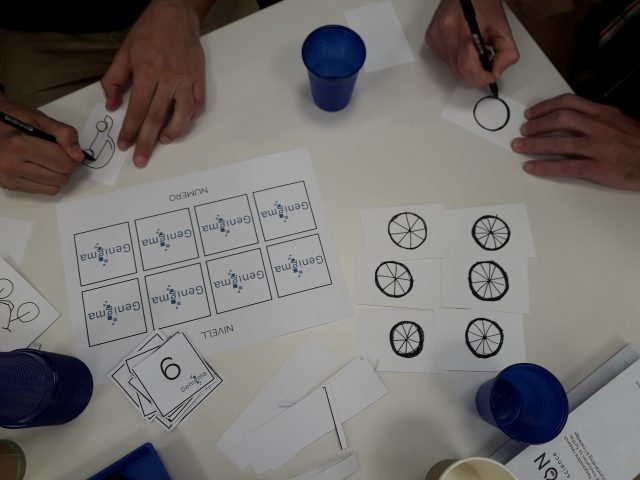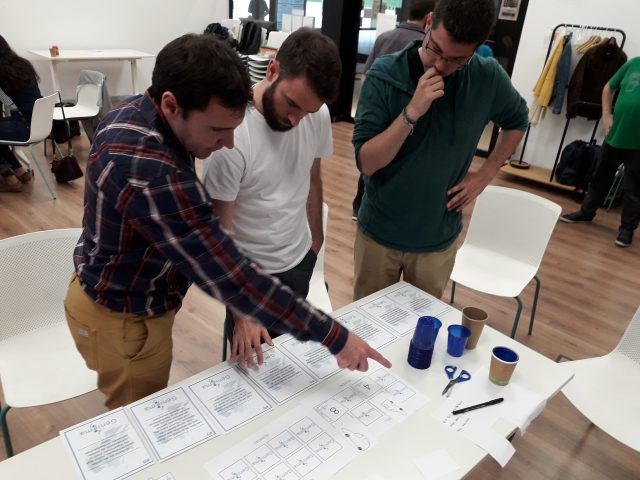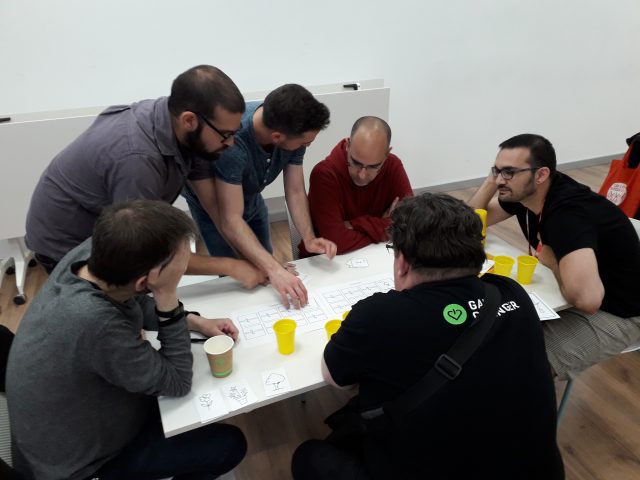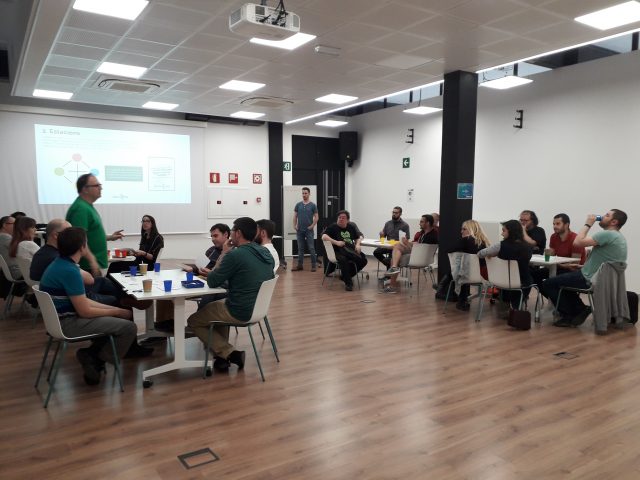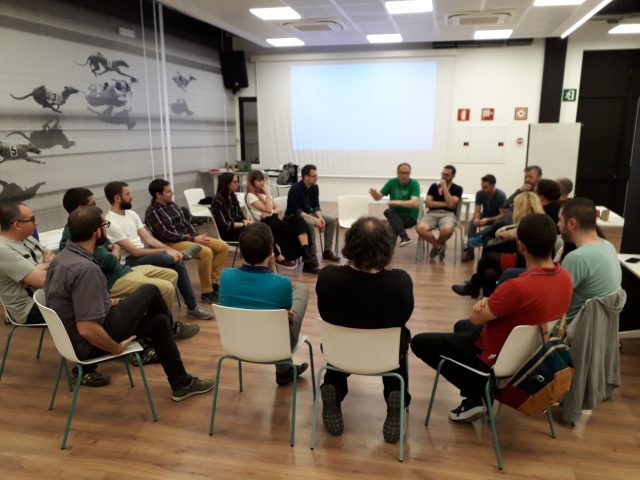On May 23rd we tested our first prototype with gamers of the Creative Research Park of Barcelona, within the framework of the Festival Calidoscopi19, dedicated to citizen science.
We started the 3-hour session by sorting participants by clans and made them play with cards that simulated the mechanics of the video game we’re creating. The clans were divided into two subgroups: one tasked with going to play the games of the other clans to defeat them and the other in charge of defending their base to avoid being won.
The game simulated what will eventually be Genigma’s scientific content: deciphering the sequence of a piece of DNA. The mini-clan explorer was in charge of ordering some number cards from 1 to 8 trying to guess the order in which the defending mini-clan had placed them. The defenders had to assess the order proposed by the scouts by giving each proposed solution a score of 0 (wrong position) to 3 (correct position). In addition, to increase the difficulty, I had to get it in a maximum of 3rd movements and/ or 10 minutes.
As a prize, and as participants played and “conquered” other bases, they received “science pills” linked to the project in letter format.
In this quiz session we were able to observe several key aspects that will help us to continue advancing the design of the game:
1. We find that it is very interesting that players are associated with a particular clan. A group commitment is activated at the same time as the competition between participants.
2. Players understood the relationship between the levels and the positions of the pieces. In addition, it was clear that the use of metaphors is an interesting point that favors the explanation of the flow of activity.
3. We validate the gameplay both at the level of fun for the user and at the level of scientific relevance of the project. This was a complex test since we didn’t have the technology to make “artificial intelligence”, but this role had to be developed by the same users. However, we could see that the connection between the game and the player was high and, consequently, in all cases we managed to get them to find the solution of the game.
4. We found that the transmission of scientific information in letter format could work. This allowed us to find that it was possible to relate science content to mechanics without having to overload information participants.
5. We could see that the participants showed a very high commitment to the project and were open to collaborating with whatever was needed.
Thank you very much to all the participants for your valuable contributions!
Especially to Rosa Monge, Marcus Bauchbeck, Federico Montes, Pau Albert Cid, Paolo Gambardella, Beatriz Martin, Rebeca Ribas, Susana Ezquerro, Oscar Sahun, Aleix Risco, Albert Falguera, Carlos Garcia, Víctor Vieyra, Dimas Alcalde.
